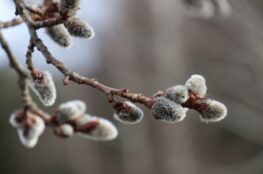Health benefits of birch sap
March is the time of the year when birch sap, also known as birch juice or birch water, is collected. It is believed that it helps with detox, improves the immune system and metabolism, clears kidneys, removes calcium deposits from joints and provides many other health benefits.
The sap is most beneficial in the first four days of tapping, however, the fermentation process starts as soon as the second day. You can drink as much juice as you physically can, but it is recommended to drink a litre (just under 2 pints) a day for 10 days straight and have a fast day of eating just rye bread during one of those days.
Birch sap is great for beauty procedures. One can wash the face with it or use it as a lotion to refresh the skin – to get the benefits all year round, the sap can be frozen in cubes and used in the mornings throughout the year. The sap is great also as a hair rinse for dry and damaged hair.
While tapping your birch, make sure to collect a few buds – traditions say that vodka infused with birch buds will stop stomach ache and diarrhea (“caurs vēders”).
Preserving and fermentation of birch sap
The best way how to preserve birch sap for hot summer days is to bottle the juice and add a few raisins or a twig of blackcurrant to help with the fermentation process. It needs to be kept at room temperature for a couple of days, after that it must be stored in a very cool place. This method will give a refreshing, slightly fizzy drink with a touch of sourness.
If you are keen to experiment, various aromatic or healing herbs can be added, for example, juniper berries or mint.
The easiest way is to bottle the juice in plastic bottles and freezing it for later consumption.
Birch tapping tips
- Sulu mēnesis (literally, “juice month”) depends on the weather, but it usually starts when the snow is melting and tree buds are coming out of dormancy, usually mid-March and early April. When the tree buds open, sap becomes cloudy and the tapping time is over.
- It is recommended to tap birches that you plan to chop down, however, trees should not be growing in the ditches or bogs. Trees in a sunny position will give more juice.
- The drill hole must not exceed 1/4 of the width of the tree, and you must close the drill hole with a wooden pin or wax to prevent bacteria from growing. The diameter of the tree trunk should be at least 20cm (8 inches).
- Each mature tree can produce up to 30 litres (10 gallons) of sap a day, and up to 200 litres (52 gallons) per tapping.
- Traditions state that the best quality sap can be collected during a new moon while the strength of the tree is going upwards.
- Colder days will slow the collection of the juice. The juice will come faster on warm days.
- It is best to collect the sap in large, sealed bags to prevent bugs and rainwater from contaminating the juice.
How to tap a birch
If you want to attempt to tap your own birch, there’s a good video on how to do it. For a more humouristic approach to birch tapping, have a look at this video (but do not try it at home).
Other trees that can be tapped include maples and alders, but juice from them need to be collected even earlier.
Birch sap products
If you would like to try birch sap products, look out for Latvian Bio Birch Sap from Valmiermuiža, Birch Sap Syrup from Birzī, Birch Sap from Livonia, and Birch Sap Wine from Liberti.
Photo by Patrick Hendry on Unsplash





